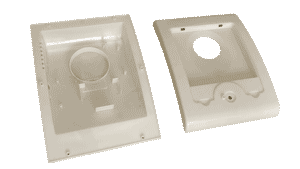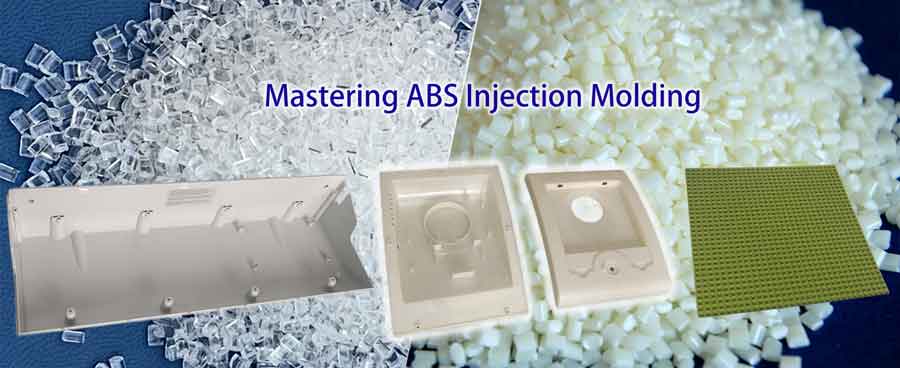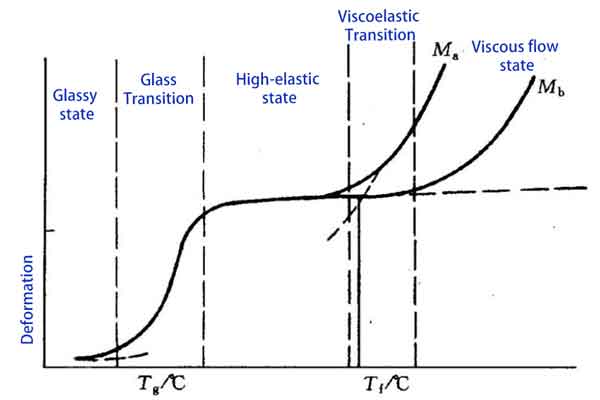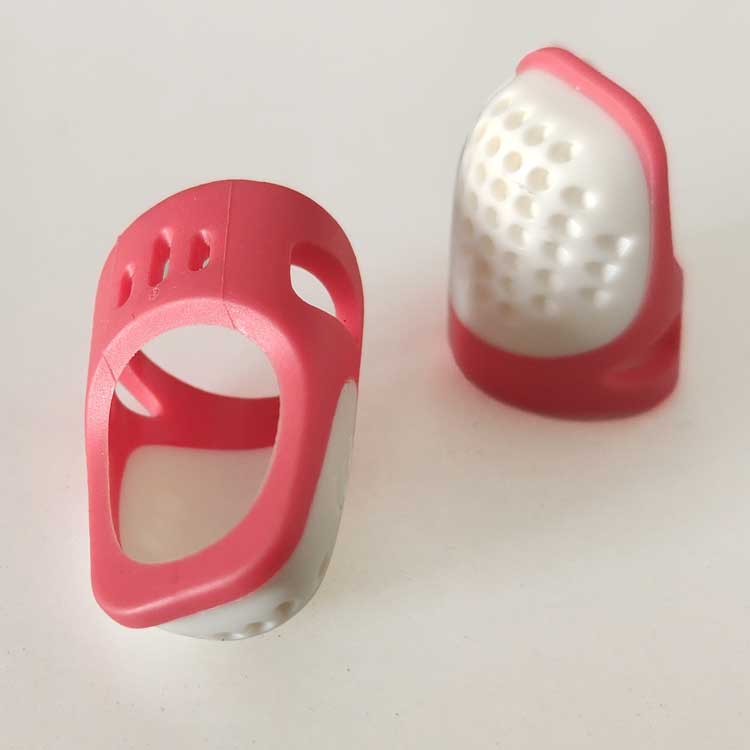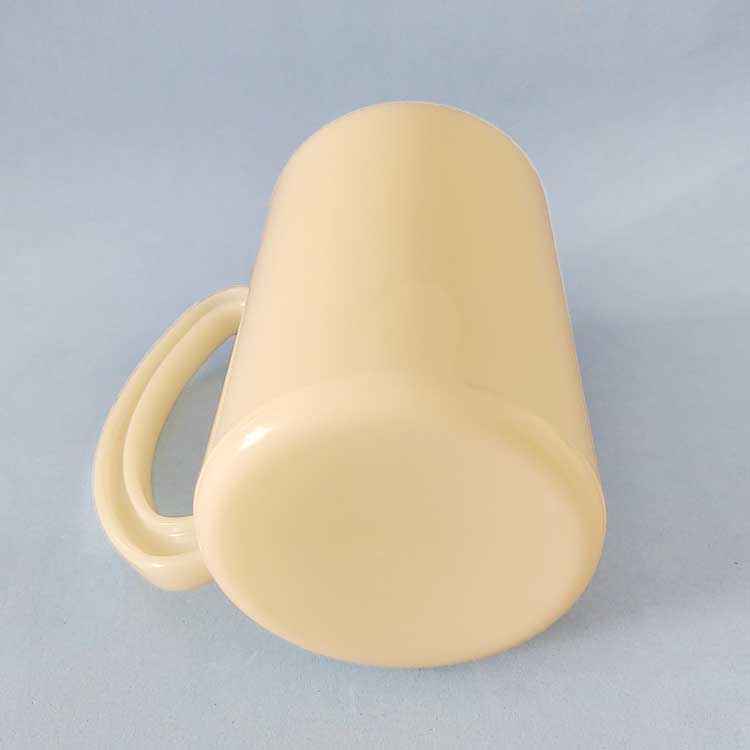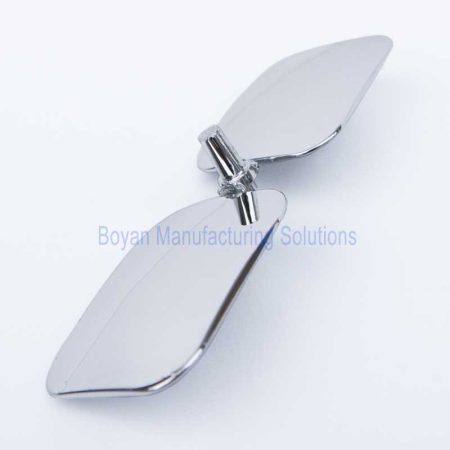A comprehensive guide to ABS injection molding
Understanding ABS: A Versatile Plastic
ABS, or Acrylonitrile-Butadiene-Styrene, is a versatile and widely used amorphous plastic material that results from the copolymerization of three key raw components. This remarkable material boasts an array of exceptional properties, making it a preferred choice for a diverse range of applications.
Table of Contents
ToggleProperties at a Glance
ABS plastic is celebrated for its non-toxic and odorless nature, rendering it safe for various applications. Its visual appearance typically manifests as ivory translucent or transparent granules or powder.
With a density ranging between 1.05 to 1.18g/cm3, ABS exhibits a shrinkage rate of 0.4% to 0.9% and a hygroscopicity of less than 1%.
Notably, ordinary ABS plastics retain their toughness even at temperatures as low as -40℃ and can withstand a temperature range of -40℃ to 80℃.
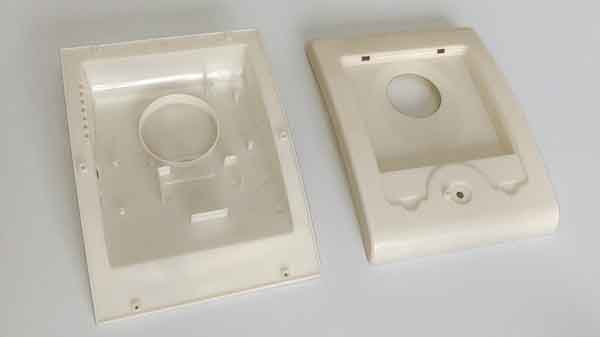
Melting temperature of ABS
The softening temperature (viscoelastic transition temperature) of ABS lies between 85 to 95°C, and its melting temperature (viscous flow temperature) is between 170-180°C. Therefore, its high-temperature resistance is not very good.
Consequently, some high-temperature resistant ABS variants have been developed, which we will discuss next.
Diverse Processing Methods
ABS lends itself to various processing methods, including injection molding, extrusion, blow molding, and foam processing. Its surface is amenable to plating and painting, and the material is weldable, expanding its utility across diverse applications.
Advantages of ABS injection molding
ABS injection molding presents a set of notable advantages:
-
- Excellent Fluidity: ABS exhibits remarkable flow properties, making it exceptionally well-suited for intricate injection molding processes.
- Ease of Processing: Its ease of processing simplifies manufacturing, allowing for efficient production across a variety of applications.
- Impact Resistance: ABS offers a level of impact resistance, providing durability in applications where strength is essential.
- Corrosion Resistance: ABS stands up well to acid and alkali corrosion, making it a reliable choice for diverse chemical environments.Versatile Color Options: ABS readily accepts a wide range of colors, offering flexibility in design and aesthetics.
- High Surface Gloss: ABS products often boast a high surface gloss, adding a polished and appealing finish to the final products.
Disadvantages of ABS Plastic
While ABS plastic offers numerous advantages, understanding its disadvantages is crucial for appropriate application. Here’s a concise overview of the main disadvantages of ABS plastic:
-
-
Poor Weather Resistance: A significant disadvantage of ABS plastic is its low weather resistance, especially when used outdoors for extended periods. It ages quickly under UV exposure, resulting in yellowing, powdering, and increased brittleness, which limits its outdoor use.
-
Low Heat Distortion Temperature: ABS plastic has a low heat distortion temperature, making it prone to softening in high-temperature environments. The low softening and melting temperature of ABS means it is not ideal for applications near heat sources or hot machinery parts.
-
Flammability: A notable disadvantage of standard ABS plastic is its flammability. It tends to burn, producing a lot of black smoke, limiting its use in applications where high fire resistance is necessary.
-
Chemical Stability Issues: ABS plastic’s resistance to certain chemicals like acids, alkalis, and oils is relatively weak, leading to potential corrosion or dissolution. This factor must be considered when ABS is used in environments exposed to harsh chemicals.
-
Acknowledging these disadvantages of ABS plastic is essential for its selection, taking into account the specific application environment, safety requirements, and cost-effectiveness.
In some scenarios, opting for modified ABS or alternatives such as PC (Polycarbonate), PC/ABS blends, or PP (Polypropylene) might be more suitable, as each material offers different advantages and disadvantages based on the application’s needs. The right choice of material is key to ensuring product performance and safety.
Diverse Applications of ABS Injection Molding
ABS, owing to its unique properties and processing capabilities, finds extensive applications across various industries.
1. Home Appliances and Office Equipment: ABS is prominently used in the manufacturing of structural parts for a wide array of home appliances. These include juicers, rice cookers, kettles, and hair dryers, where the robustness and aesthetic appeal of ABS play a pivotal role. Similarly, in office equipment, ABS is often the material of choice for crafting typewriter casings, keyboards, and router casings, ensuring a balance of durability and design.
2. Automotive Industry: The automotive sector extensively relies on ABS for an assortment of applications. ABS is commonly employed for crafting interior parts, contributing to the overall aesthetic appeal and structural integrity of various components. Additionally, it finds use in the production of engine peripheral parts, where its impact resistance and malleability are valuable assets.
3. Toy Manufacturing: ABS is a staple material in the toy industry, renowned for its strength and versatility. Popular toys, including the iconic Lego building blocks, utilize ABS for its ability to withstand substantial impact and maintain intricate shapes.
Materials as Alternatives to ABS: While ABS holds a prominent position in the world of plastic manufacturing, other materials such as PP and PC/ABS also serve as viable alternatives for producing shell parts. While PP is a cost-effective alternative, its inferior gloss, hardness, and toughness compared to ABS may limit its application in certain contexts.
Understanding the unique advantages and contexts of these materials is crucial for ensuring optimal performance and quality in various manufacturing processes.
Diverse ABS Varieties
ABS, a copolymer of acrylonitrile, butadiene, and styrene, derives its properties from these constituent materials. Acrylonitrile contributes strength, chemical resistance, and thermal stability, while butadiene enhances toughness and impact resistance. Styrene imparts high gloss, easy coloring, and smooth processing.
Varying the monomer ratios yields ABS with diverse physical properties, catering to specific application needs. Furthermore, incorporating additives like glass fibers bolsters strength, while flame retardants enhance fire resistance. These adjustments highlight the adaptability of ABS, enabling its utilization across various industries for an array of specialized purposes.
Diverse Impact Resistance Levels in ABS
Based on the level of impact resistance, ABS can be classified into three categories. Each category has its own advantages and uses, and it’s not always the case that higher impact resistance is better.
-
High Impact ABS:
- Noted for its elevated price owing to a significant rubber content.
- Prominent manufacturers offer high-impact ABS such as A290X (Trenseo), AE8000 (Formasa Ningbo), and 79SK (Chimei), boasting an impact resistance exceeding 39KJ/m².
- Recognized for its exceptional durability, low melt index, and suitability for manufacturing safety helmets, toolboxes, suitcases, and other robust applications.
-
Medium Impact ABS:
- Exhibits an impact resistance ranging from 22 to 25KJ/m².
- Examples include 757 (Chimei Taiwan), 757K (Chimei Zhenjiang or Zhangzhou), and 121H (LG Plastics) with a similar 22 KJ/m² impact resistance.
- Frequently utilized in the production of home appliances and various auto parts.
- 15A1 (Formasa) represents an additional option within this category.
-
Low Impact ABS:
- Demonstrates an impact resistance of 16-18 KJ/m².
- Notable variants like 707K (Chimei Zhenjiang) exhibit exceptional gloss, making them suitable for applications where surface finish is a priority.
- 15E1 (Formasa) is another notable type within this classification.
Understanding the distinct characteristics and application-specific benefits of each ABS variant enables manufacturers to make informed decisions based on their particular production requirements.
Flame Retardant ABS
Ordinary ABS can be susceptible to combustion, emitting strong flames, dark smoke, and a pungent odor during the burning process. It also produces harmful byproducts, including carbon monoxide and hydrogenated chlorine.
Prominent manufacturers offer flame-retardant ABS varieties, which mitigate these concerns:
- PA-766B, PA-765A (Chimei Taiwan), and FR-500 (LG Yongxing) are notable examples of flame-retardant ABS.
- Take, for instance, PA-765A with a melt index of 48, specific gravity of 1.17, tensile strength of 39 MPa, bending strength of 56 MPa, and an impact strength of 22 KJ. It features a thermal deformation temperature range of 74-84℃, achieving a flame retardant grade of V1. At 2.1 mm, it reaches V0, and at 2.5mm, it achieves the highest 5VA rating.
- Flame-retardant ABS is aptly suited for crafting monitor casings, modem casings, power sockets, printer casings, and similar applications, prioritizing safety and durability.
These flame-retardant ABS variants are engineered to adhere to stringent safety standards while maintaining the versatility and processability that ABS is renowned for, making them indispensable for applications where fire resistance is paramount.
Heat-Resistant ABS
Standard ABS may lack resilience in high-temperature environments, readily deforming when exposed to heat sources like a hair dryer.
In contrast, heat-resistant ABS offers a solution with various grades capable of withstanding temperatures up to 120 ℃ without deformation or degradation. Notable examples include 777B, 777D, 777E from Chimei, HJ730 from Samsung and H2938 from Kumho. These grades are celebrated for their exceptional heat resistance, mechanical strength, and electrical insulation properties.
Among them, HJ730 can be used to make containers used in microwave ovens because of its non-toxicity.
These heat-resistant ABS variants have found wide-ranging applications in the fields of electronic appliances, home appliances, and automobile parts. Their ability to withstand elevated temperatures ensures product longevity and reliability in settings where heat tolerance is a prerequisite.
Transparent ABS
Transparent ABS, also known as MABS or methyl methacrylate-acrylonitrile-butadiene-styrene plastic, is engineered by blending ABS with PMMA, resulting in a transparent and durable material.
Prominent brands that produce transparent ABS include 920 (Toray), TR558, 557 (LG Plastic), and Chimei’s PA-758 (Chimei Taiwan). This specialized ABS variant is favored for applications where transparency is a key requirement.
Food-Grade ABS
Food-grade ABS meets stringent FDA certification standards, ensuring its safety for direct contact with food. These ABS variants are free from harmful substances, making them ideal for food-related applications.
Notable grades include 757F, 737 (Chimei), 2802HD, 2802-TR (BASF), HP20, HP30 (Sabic), 920 (Toray), and SX-200 (Asahi). Food-grade ABS is essential for various culinary and food processing applications, guaranteeing the highest standards of safety and compliance.
Other grades of ABS plastics
In addition to the previously mentioned ABS variants, there are several other specialized types to consider, such as glass fiber-reinforced ABS, anti-static ABS, and light-shielding ABS. The choice of ABS type should align with your specific requirements and intended applications.
If you have specific material needs or require guidance in selecting the most suitable ABS variant for your project, please feel free to reach out to us. We are here to assist you in making informed decisions and ensuring the right material for your unique applications.
Best Practices for ABS Injection Molding Process
Mold Aspect
-
Mold Surface Quality: A paramount factor is ensuring the mold’s surface quality. The absence of scars, micropores, friction marks, or roughness is critical. Smoothing the cavity’s surface, and if necessary, utilizing chrome plating for polishing, can greatly enhance the final product’s appearance.
-
Draft Angle: Reasonably designed draft angles are crucial to prevent surface strain. Inadequate draft angles can lead to cosmetic imperfections in the molded part.
-
Gate Design: The type and location of the gate significantly influence surface quality. Inadequate gate design may complicate post-processing. Thoughtful gate placement is essential.
Injection Molding Process
-
Injection Speed: In the ABS injection molding process, an overly low injection speed can result in insufficient plastic density and poor gloss on the injection molded part. Adjusting the injection speed to an appropriate level can enhance surface quality.
-
Cooling: For thick-walled plastic parts, inadequate cooling can lead to surface imperfections and reduced luster. Having a properly designed wall thickness and improving the cooling system is vital to maintaining product quality.
-
Holding Pressure and Time: Inadequate holding pressure and a short holding time may result in poor density and gloss. To address this, it is important to increase both the holding pressure and holding time during the injection molding process.
Attention to these critical factors in the mold design and injection molding process will help ensure the production of high-quality ABS parts with the desired surface finish and physical properties.
Drying Treatment
-
Importance of Drying: While some factories may skip this step for low-quality ABS products, it’s crucial to understand that ABS requires proper drying before injection molding.
-
Recommended Drying Conditions: The recommended drying temperature for ABS is in the range of 80-90℃, and it’s advisable to maintain this temperature for a duration of at least 2-3 hours. This process ensures that the material’s humidity remains below 0.1%. Neglecting to dry ABS adequately can lead to issues such as water mist and silver streaks on the product’s surface.
Recommended Injection Parameters for ABS
-
Injection Pressure: In typical ABS injection molding, the injection pressure generally falls within the range of 50-100MPa. This pressure range is often suitable for achieving the desired results.
-
Injection Speed: Optimal injection speed often falls within the medium to high range. Adjusting the injection speed within this range can help maintain the quality and integrity of the molded ABS parts.
-
Molding temperature: Considering the melting temperature of ABS being 170 to 180 ℃, the injection temperatures typically range from 200 to 230°C for ABS, with variations among ABS types. Caution is needed to avoid excessive heat, which can lead to plastic decomposition. Mold temperatures generally range between 50 and 80°C, but for high glossy products, higher mold temperatures are necessary.
Adhering to these recommendations for drying treatment and injection parameters is vital to produce ABS parts that meet quality standards and avoid common surface defects associated with moisture and incorrect injection conditions.
Conclusion
In summary, ABS injection molding, with its diverse variants catering to specific application requirements, offers a versatile solution across various industries.
Attention to mold quality, appropriate drying treatment, and meticulous control of injection parameters are vital for achieving superior surface quality and overall product performance.
With its diverse variants catering to specific application needs, ABS continues to demonstrate its adaptability and resilience, solidifying its position as a cornerstone in the world of plastic manufacturing.
